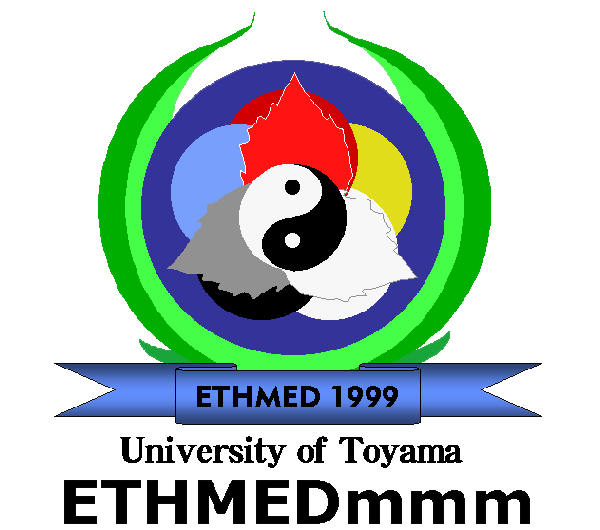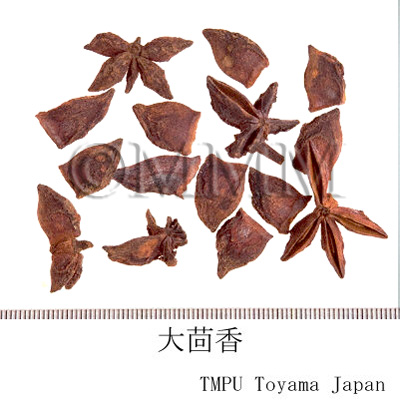Crude drug sample data base
※Click on the image to enlarge it.
Scientific information data base
| Common name | 大茴香, Dahuixiang, Anisi Stellati Fructus (CP2020), Chinese Star Anise (CP2020), Star Anise | |||||
|---|---|---|---|---|---|---|
| Synonyms | 八角茴香, スターアニス | |||||
| crude drug image |
| |||||
| Original plant name | Illicium verum Hook. fil. | |||||
| Family name | Illiciaceae | |||||
| Used part | mature fruit | |||||
| Quality for selection | Good one is large and deep reddish-brown. It has a strong odor and contains a high amount of essential oil. (TN) | |||||
| Official compendium | CP (2020 ed.) | |||||
| Clinical application | As an aromatic stomachic, analgesic and carminative, it is applied to treat abdominal bloating, vomiting, abdominal pain due to cold, and beriberi due to cold-damp. It is also a corrigent as well as perfume. One of the raw materials for fennel oil (star-anise oil). | |||||
| Medical system | Traditional Chinese medicine | |||||
| Drug effect in traditional medicine | Traditional classification | Drugs for dispelling internal cold | ||||
| Beneficial effect | [Property and Flavor] Warm; pungent. [Meridian Tropism] Liver, kidney, spleen and stomach meridians. [Actions] To warm yang and dissipate cold, regulate qi to relieve pain. [Indications] Cold abdominal colic and abdominal pain, vomiting caused by stomach cold, stomach duct and abdominal cold pain. | |||||
| Chemical constituent | Fatty acids related compounds (*C1): Dipentene, 脂肪油/fat oil Monoterpenoids (*C1): Pinene, alpha-Phellandrene, beta-Phellandrene, 1,8-Cineol, Limonene Phenylpropanoids (*C1): Anethole(精油(3-3.5%) の85~90%を占める), Safrole, Methyl chavicol Quinones (*C1): Hydroquinone monoethyl ether Phenol carbonate derivatives (*C1): Protocatechuic acid Other aromatic derivatives (*C1): Anisketone, Anisaldehyde (= Anisic aldehyde), Anisic acid | |||||
| Chemical structure |
※画像をクリックすると、拡大して表示されます。 | |||||
| Pharmacological effect | Antibacterial. | |||||
| DNA sequence | AF163724 | |||||
| Disease | Full stomach, Abdominal pain, Vomitting, Lower back pain | |||||
| Formulation | rarely used in formula | |||||
| Related drugs | Foeniculi Fructus. | |||||
| References | CP2020: Pharmacopoeia of the People's Republic of China 2020 edi. C1)The Encyclopedia of Wakan-Yaku with Color Pictures Vol. I, pp 189-190. | |||||
| Remarks | - The benefit of Bajiaohuixiang (Jap. name: Daiuikyō) resembles Xiaohuixiang (Jap. name: Shouikyō). However, Daiuikyō has the heat property which warms the organs strongly, dispels cold and relieves pain. - The fruit of Ilicium religiosum Sieb. et Zucc. (Jap. name: Shikimi), produced in Japan, is the congener of Daiuikyō. Though it resembles Daiuikyō closely, it has a toxic component anisatin. Therefore, it must not be mixed with Daiuikyō. | |||||
| Last renewal date | 2021/09/28 | |||||










